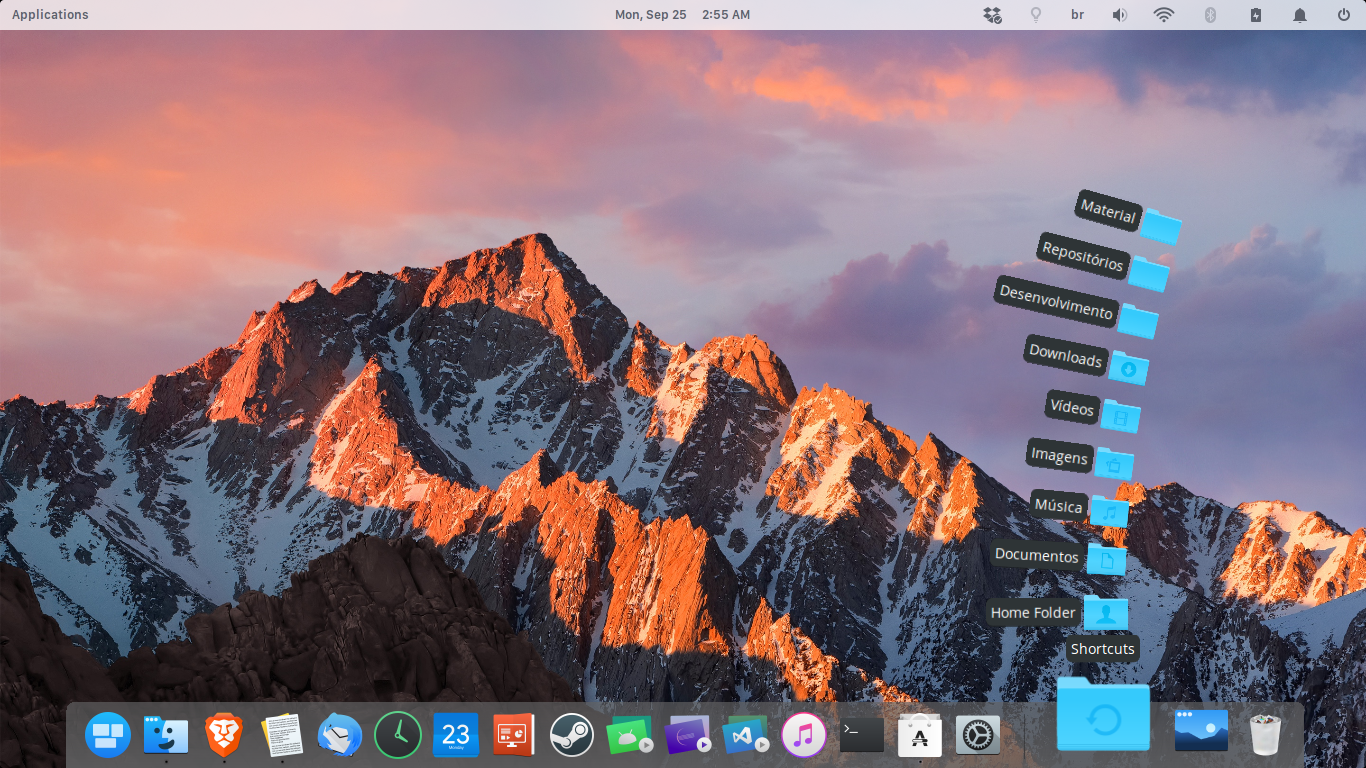

You can change your icons to virtually anything you want. If you want to see this reflected in the Dock, simply start or restart the application.
#Changing folder icons mac os sierra password
You will be prompted to enter your user password to change an application’s icon, but once you do, your new icon will be used instead of the old. Here’s our Safari info, which we find by opening our Applications folder (“Shift + Command + A” in Finder or from the Go menu), clicking on it and then using “Command + I” (or right-click “Get Info”).Īgain, just like with our folders, click the little icon in the upper-left corner so it has a blue border around it and then paste (“Command + V”) the clipboard’s contents. We open it with Preview and see it has quite a few icons contained within it, so which one do we use? You actually don’t need to choose one, simply select them all with “Command + A” and then copy using “Command + C”. icns file that we found on a website and it seem to suit our needs perfectly. We want to change our Safari icon, not too drastically, just to something flat.
#Changing folder icons mac os sierra how to
Let’s show you an example of what we mean and how to use. icns, which is an Apple icon library file. You can also find icon files that have the extension. png format with a transparent background. That said, you will run into various images and formats along the way, many of which may not be ideal as an icon. Remember, you can use any picture, so if it can be opened in Preview, it can be copied and probably used as an icon. It’s not just folder icons, however, you can change application icons as well using the same method. You can go through and change any or all of these folders, which will then be reflected throughout the system in titlebars and even in your sidebar’s favorites if you want to use color icons instead of OS X’s default gray ones. Now, simply paste the clipboard contents by pressing “Command + V” and your Desktop’s folder icon will be changed. Click the icon in the upper-left corner so that it has a blue border around it. Not a big issue for me, but worth noting.Select the item, in this case our Desktop folder, and either right-click and select “Get Info” or more easily, use “Command + I” to open that item’s information panel. Important Note: The only noticeable downside to this approach is that you can no longer drag and drop files into the sidebar aliases, as you can when there's an actual folder in the sidebar. Using an alias, I can have my smb://.local/Collating/Photos/ folder appear in the sidebar as 📸 Collating Photos, without touching the actual folder name itself. I've got a number of network folders in my sidebar and they all have the same name "Photos" for example. Then I renamed those to include whatever emoji icons I want to help visibility, and added those aliases to the sidebar.īonus: You can make the names themselves more descriptive. I created ~/Library/Sidebar Aliases/ folder and dropped a number of aliases in there (Command-Option drag the folder). Instead you can put an alias to the folder in the sidebar, and have that alias contain the emoji.

You get better visibility and much faster access.īest thing I've managed to do for easy visibility is to add emoji to the names of the folders.īut of course you likely don't want to add emoji to the folders themselves. I'd love to be able to change the icons without an add-on.


 0 kommentar(er)
0 kommentar(er)
